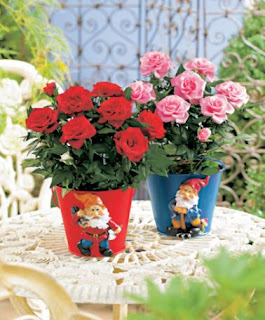Fragrance oils are man-made oils that blended the synthetic or natural
scents. Fragrance oils are commonly used in home-scents, perfumes, make-up and
aromatherapy. These oils are made up typically of artificial materials;
therefore it should not be directly applied to the body. Another terminology for
fragrance oils are: burning oils, aromatic oils, simmering oils, and potpourri
oils.
If we take a look at it based in our history, thousand of years ago the
native fragrant oils have been already used for many things which include
ceremonies like baptism and anointing. Today fragrance oils have become
exceptionally known to use and can have a various benefits in the office, at
home or even inside a vehicle. The following are the common uses of atlanta
georgia fragrance oils.
Plants in the mint family are very hardy perennials with vigorous growth
habits. Mint, left to its own devices, will spread quickly and become a
nuisance. However, it is very popular as a flavorful herb and the plants can be
grown easily. Just try to chose a spot where you won’t mind the rampant growth
or grow it in a confined space.
Being able to breathe in the instant calming and relaxation effects from
this fantastic plant is truly one of natures wonderful gifts. Lavender's
calming, relaxing, stress relieving, and healing properties have become very
popular around the world today for good reason, with the hectic and stressful
lives many of us have come to lead.
Why is lavender aromatherapy so popular today? It is considered by many to
be a natural, alternative remedy for a variety of common ailments ranging from
anxiety, headaches, to insomnia. It has been shown in many research studies that
lavender can ease stress, induce relaxation, refresh, and even invigorate. For
the skin, lavender oil is often used to treat fungal infections, sooth wounds
and sunburn, even insect bites.
Fragrance demonstrators go back at least to the 1950s, when women were just
starting to buy fragrances for themselves; previously, men gave gifts of
fragrance and flowers, said Stephan Kanlian, the chairman of the master’s
program in cosmetics and fragrance marketing at theFashion Institute of
Technology. The novelty of spritzers effectively enticed women to stray from
their signature scent to buy something new, he said.
But today there’s growing recognition in the industry that aggressive
spritzing offends too many potential customers. “It’s gone from being something
that was a little bit fun, and something you could avoid since there weren’t
that many of them, to feeling like you’re dodging bullets all the time,” said
Ann Gottlieb, a marketer who has shepherded fine fragrances from brands like
Dior and Marc Jacobs.
At a handful of department stores, fragrance demonstrators who pounce,
spray and sell hard are being tamed. They may still flood the floor for debuts
and other special events, but they are being gradually replaced by salesclerks
who actually ask customers what scents they prefer and — gasp — listen to the
reply.
In our room, most of our carpets leave us unpleasant smell that has trap
unlikable odours and is very difficult to avoid. Add quite a small amount of
fragrant oil into a pack of cornstarch or baking soda. Mix it it well and let it
parched for a day or two and then spray it into your carpet. Wait for 30 minutes
to 1 hour, then vacuum your carpet will again smell good.
Does your potpourri losses its scent? Basically try your favourite oil, put
in a few drops of it and you will have a container or plate of potpourri
changed. You can do this at home anytime you want.
If you want to give it as a gift or souvenir, look for a bookmark or
stationery and imbue it with fragrant oil. When these items are used, you will
always be remembered.
Do you like aromatic linens? On paper towels, try to put a few drops of
wholesale fragrance oils of your chosen flavor and get towels that are
individual and put them between your sheets, towels or pillow cases.
It is clearly visible that numerous things can be freshened up by
heavenlybody productsfragrance oils. You might can’t wait to give it a try
simple yet inexpensive remedies.





























